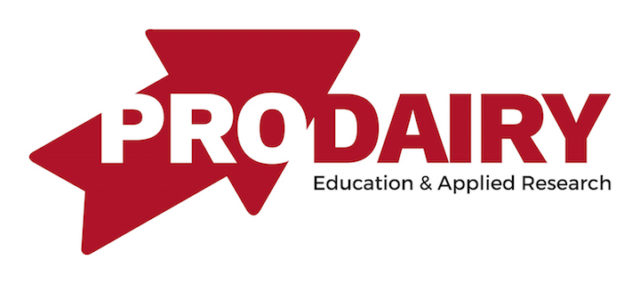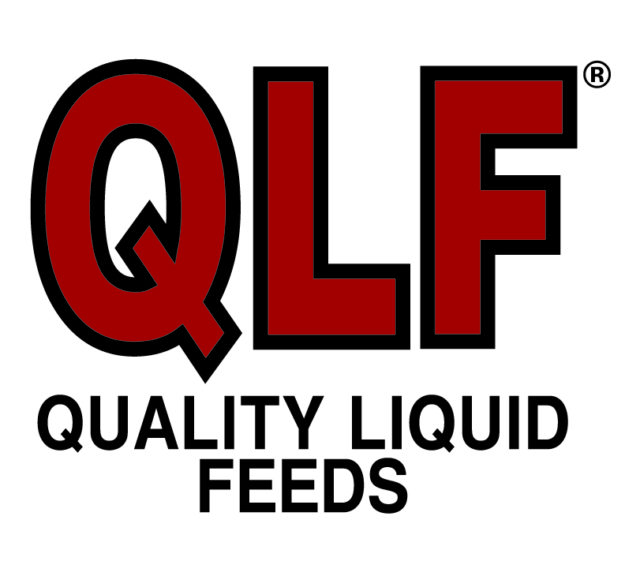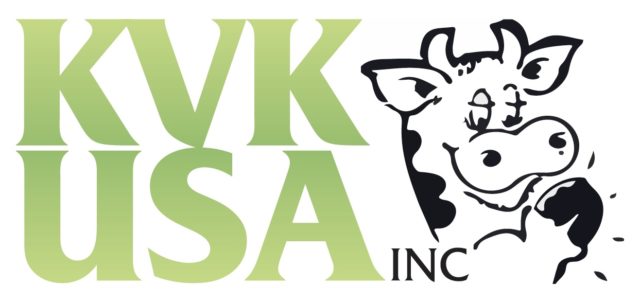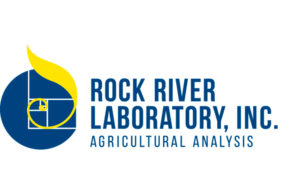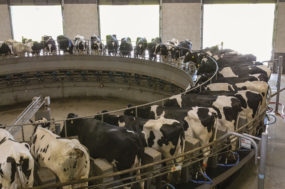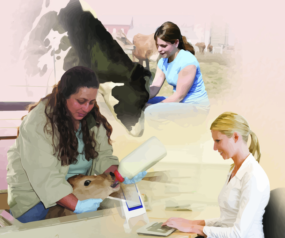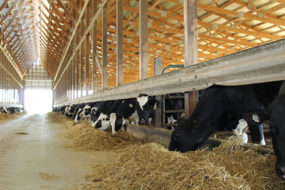While enjoying the mild Canadian winter, the last thing on a producer’s mind is the threat of mycotoxins on their farms.But an early and unseasonal increase in temperature gives mould growth and its subsequent mycotoxin formations an ideal environment in storage facilities.
The longer silage is stored throughout the winter and spring, the more opportunity there is for an escalation of mould and significant mycotoxin production, which can directly affect rumen function.
Mycotoxins
Mycotoxins are harmful compounds produced by moulds. Moulds can be found in soils and fields pre-harvest, as well as in stored feeds and silage post-harvest.
Between the cutting, packing and storing of silage, any oxygen remaining or subsequently entering the bunk can cause moulds to grow.
Even in a plastic-covered storage system, oxygen penetration is slowed but still present. The air supports the growth of acid-tolerant yeast and moulds, which often produce Penicillium toxins that will remain within the silage.
Storage mycotoxins like PR toxin, penicillic acid, roquefortine C and mycophenolic acid are responsible for rumen-related issues, laminitis, liver health problems and immune challenges.
If producers see ongoing, unexplainable herd health challenges, mycotoxins should not be ruled out and tests should be done quickly to determine what kinds of moulds and/or mycotoxins are present.
Detection
While mould count and rapid tests can assist producers with an assessment of their silage, mycotoxins are often difficult to detect.
Too often, producers test for field mycotoxins and forget to account for the storage-related issues in their bunkers as well.
Both types of toxins cause issues with herd health and performance, but the lack of knowledge of storage mycotoxins places many farms in danger of losing quality milk and the health of their dairy cows.
It was once thought cows could handle toxins better than other species thanks to the rumen. However, increasing dry matter intake and rumen passage rates give less time for mycotoxin degradation to take place.
This, along with the presence of storage mycotoxins that reduce microbial action, likely reduces the protection of the rumen.
Prevention and silage management
Besides practicing good silage management, testing for mould and mycotoxin presence can help producers start to identify why the mould is present.
Pinpointing which control point or points have been compromised is a difficult task but can ultimately help to improve future forage management and reduce challenges.
It is important to check the dry matter of the crop when itâÂÂs harvested and pack and seal the forage tightly to ensure air penetration is at a minimum.
Managing the face of your silage is imperative to abating mould growth once the silage has been opened.
Other management techniques to minimize mouldly silage:
- Harvest forages at the recommended maturity and moisture level for your storage system.
- Do not let corn stand in the field after reaching maturity or killing frost.
- Be sure chopper knives are sharp and cut at the correct length to improve packing.
- Harvest forages as quickly as possible and pack tightly with the proper weight of tractor matched to the right number of packing hours and filling rate.
- Be sure the silo is sealed to exclude oxygen. Use plastic covers secured by tires on bunkers.
- Patch any holes in plastic covers, bags or wrapped bales as soon as possible.
- Discard obviously spoiled feed or layers of feed.
- Clean out leftover feed from feeding bunks regularly.
- Consider the use of an inoculant in silage or acid additive in high-moisture corn to enhance fermentation and storage ability.
- Match the rate of feed removal from the silo face to the size of the herd. For example, bunker silo faces should be removed at four to six inches and upright silo faces at three to four inches per day. Use the higher rate during the warm seasons.
- When confronted with a toxicity problem, stop feeding the contaminated feed.
- In consultation with your veterinarian or nutritionist, consider the use of a mycotoxin adsorbent to be mixed with the feed.
No matter the climate, toxins will continue to be an issue for producers around the world. Although the dairy cow is the best indicator of mycotoxin presence, testing Canadian dairy feedstuffs both for DON and mould identification is recommended.
While DON can be used as a marker for field mycotoxins, mould identification helps in assessing the impact of storage/silage mycotoxins.
As always, prevention is better than cure and, therefore, adapting early prevention measures will assist in creating a less hospitable environment for toxins to be produced. PD

-
Paul Groenewegen M.Sc
- Canadian Technical Manager
- Alltech
- Email Paul Groenewegen

